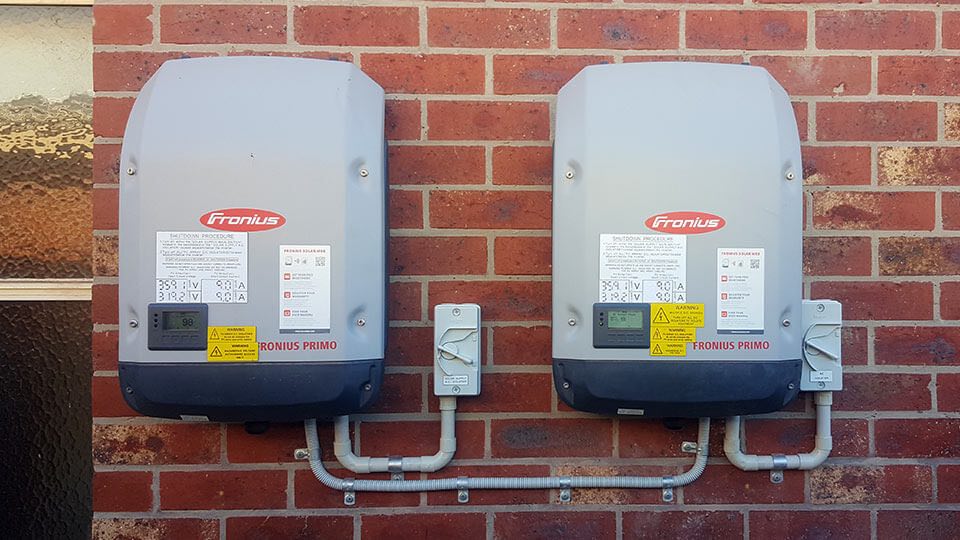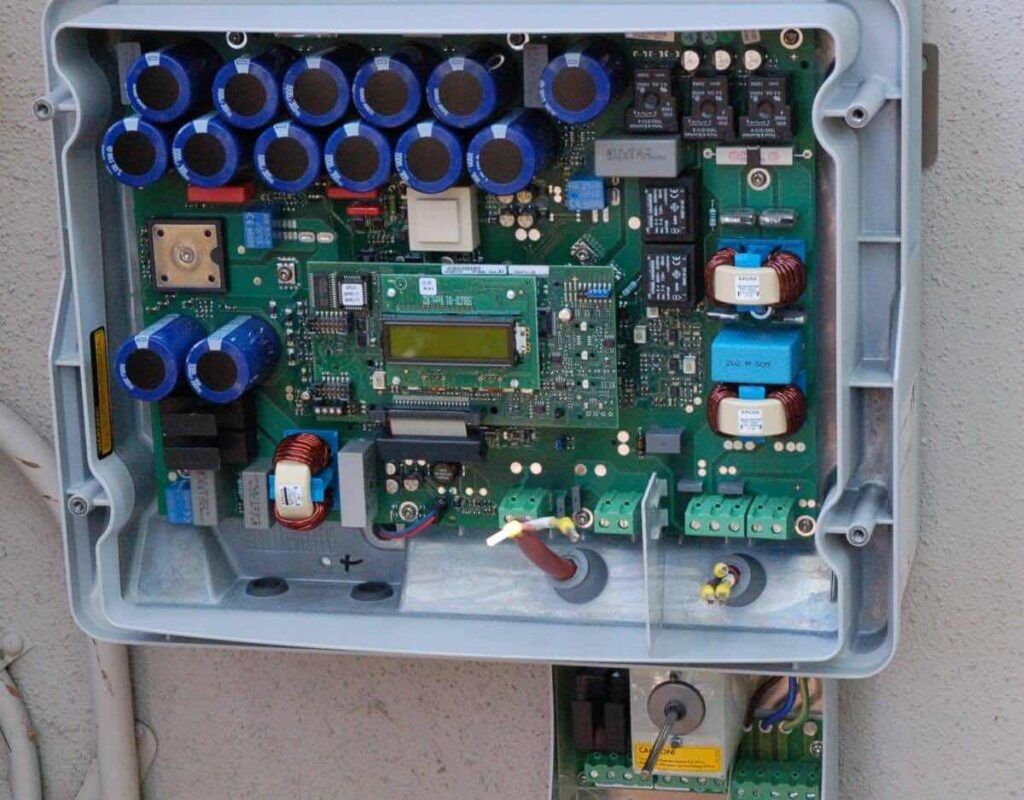Last update July 10th, 2024 at 05:23 pm
A solar panel system consists of several components, and the inverter is among the most essential parts of it. A solar inverter converts the direct current (DC) from the solar panels into alternating current (AC) used by your home appliances.
Without the solar inverter, you will not be able to use the energy produced by your solar panels. When an inverter stops working, you have two choices. You replace it or repair it.
You can repair a solar inverter. Here is everything you need to know!

What is the expected lifespan of a solar inverter?
Most solar panels will last for at least 25 years, the solar inverter has an expected lifespan of 12 years. In other words, you may expect to replace your inverter one or two times before replacing the panels.
At the same time, it is important to note that different inverter types may have different lifespans.
Most Australians have string inverters, and these will normally last for 12 years or so. But if you have micro inverters, you can expect these to last for up to twice as long (25 years).
Environmental and other external factors impact the lifespan of an inverter.

What can affect the lifespan of your solar inverter?
The following factors can cause an inverter to stop working before its expected lifespan is reached.
Insufficient installation
In rare cases, a malfunctioning inverter can be the result of a faulty installation. When installing the inverter, it is important to make sure it is the right size for the solar panels.
The general recommendation is to make sure the panel capacity is no more than 133% of the capacity of the inverter. The right sizing and correct installation are both important.
Humidity
If there is a high level of humidity where you live, this may cause faster degradation of the solar panels. Water in the atmosphere causes the photons from the sun to reflect and this leads to lower panel efficiency.
When the solar panels produce less, this affects the inverter’s ability to deliver the programmed output. In some cases, this can lead to inverter problems or failure.
Extreme heat
It is important to install the inverter in a cool area with sufficient air circulation to keep it from overheating. Remember, electronics and heat are rarely a good combination, as the heat can wear out the device.
Long-lasting heat can have a specific negative effect on the inverter. The best solution is placing the inverter in an area with controlled temperature conditions.
Lack of maintenance
Regular maintenance of the inverter is important and includes cleaning and inspections. Dust and dirt may clog the vents and cooling mechanisms. These need cleaning periodically. If you don’t schedule professional maintenance regularly, this may damage the inverter.
Try this before repairing the solar inverter
Resetting an inverter will often fix the problem. If this is the case, you might not need a repair at all.
Sometimes resetting the inverter can make it work normally again. You can reset the inverter yourself without the need to call a technician.
The process can be tricky. Make sure you know what to do before you start. If not, you can risk damaging the inverter.
It may also be a good idea to look for error codes. If fault codes show on the display, note them down before you consult a professional technician.
How to repair a solar inverter?
You should never try to repair the solar inverter yourself. It is important to contact a CEC-approved technician that has the needed competence and knowledge. This will make sure the job is done safely and correctly.
The technician will repair the inverter if possible, and the repair will be done according to the given guidelines and recommendations.
Replacing the solar inverter may be better
You may get your solar inverter repaired in many cases, and this might be more economical than getting a completely new inverter. Sometimes it can be more beneficial to replace the unit rather than fix it.
Inverter warranty
If your inverter still is covered by its manufacturer warranty, you can save yourself significant costs. Sometimes the manufacturer can replace the inverter for free, which can be relevant if the inverter has a production error or does not work as expected.
What will it cost to replace the inverter?
If repair or a free replacement is not relevant, you might have to invest in a completely new inverter. This will normally cost $2,500 as a minimum if you choose a three-phase inverter.
But as long as it is possible to repair the inverter, this might be the best choice both economically and environmentally speaking.